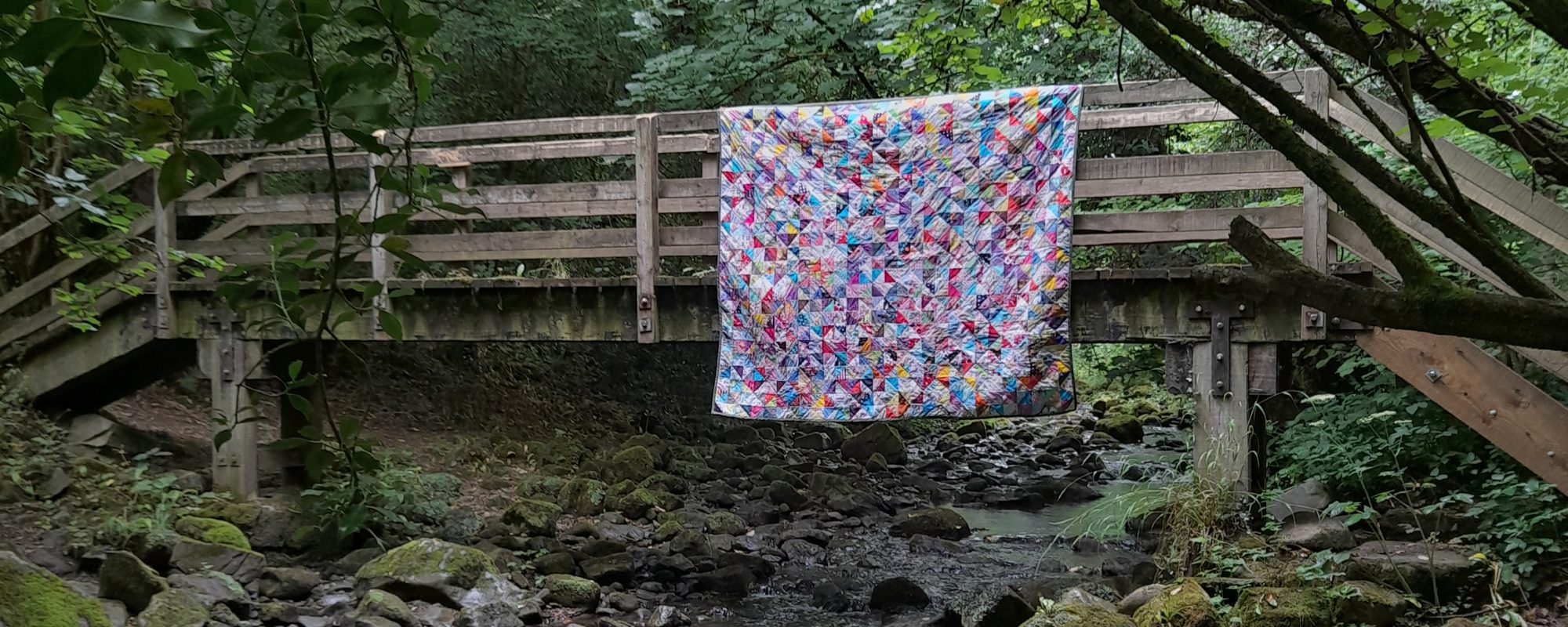Every piece of plastic ever created, is still floating around on Planet Earth. In the bellies of endangered creatures, in the oceans, in us. That information, that knowledge, is still sinking in with me. It feels unbelievable that the plastic-makers know this, and still churn out plastic. And we know it, and still buy it.
And yet I look at our lives, and it feels like plastic is so utterly inescapable. It’s everywhere. Our children’s toys are made of it. Our kitchen utensils, our computers, our garden tools, our clothes. Our food is wrapped in it. It’s. In. Everything.
Stepping away from a plastic filled life seems so insurmountable that taking things one step at a time feels like the only way. And so, inspired by friends who started the journey before us we have begun to reduce the plastic things we buy new, and find non-plastic replacements for other things. It’s slow, and our journey feels like baby steps most of the time. But once in a while we will come across an idea that feels so revolutionary and yet so utterly simple that we wonder why we’ve not tried it before. Toilet cloth was one, and beeswax wraps another. The idea of using something other than cling film to wrap your sandwiches in seems a bit odd at first, but hear me out.
Cling film can’t be recycled and it’s pretty much a use-once and chuck item. So it’s going straight to landfill. Every single time you use it.
Beeswax wraps (and soya wax wraps if you are vegan) are a really simple way of making one step away from having disposable plastic in your life. They can be used for sandwiches, or covering dishes in the fridge – they mould to your item just with the warmth of your hands. If you can’t quite imagine how that looks, watch this.
I make mine from recycled cotton cloth, often with funky vintage prints and local beeswax that comes with my veg box delivery. They last between 6-12 months, and can easily be rinsed after use with cool water and air-dried. Beeswax has antibacterial properties, so is perfect for keeping your food items fresh. Because the wraps are made of natural materials, they biodegrade and can therefore be added to a compost heat or wormery.
If you’d like to buy some, you can find my Etsy store here, but if you’ve a bit of time on your hands, it’s a remarkably simple process that I’m really happy to share.

If you want to make your own beeswax wraps, you will need some clean cotton fabric, a pair of pinking shears, an old pan, some newsprint, an iron, a paintbrush, and some beeswax.
I begin by ironing my fabric, and cutting the edges with the pinking shears to give them a finish that’s not likely to fray.

Next, I paint melted wax over one surface of the fabric, not worrying too much about how thick or neat it is, so long as the whole surface area is covered.

When this is done and the fabric is cooled, layer up some newsprint on your ironing board and sandwich your painted wrap between two prepared but unpainted pieces of fabric. More newsprint on top to protect your iron, and using a high heat setting, iron the cloth thoroughly. The excess wax will seep through into the unpainted fabric, and you will end up with three waxed wraps.

Pretty simple, hey? I think it’s something that every household can get on board with and it certainly feels good knowing that we will never need to buy cling film again!
I’d love to hear your beeswax stories – get in touch at The Phoenix Green Store on Facebook, Pinterest and Instagram to continue the conversation!
My blog and everything in it will always be free to inspire and support people to live with less plastic, live more sustainably, live with less, and work to reduce the impact of climate change. It does, however, incur running costs. If you are able to contribute to these costs you are welcome to leave a tip in my tip jar here. If not, please consider sharing this post on your social media platforms. Thanks and love, Kate.

Interesting so I am off to investigate where I can get beeswax!
LikeLike
already use beeswax wrap but find that wraping smelly wet food such as melon abnd fish returning me straight to the cling film.. How to overcome smelly food?
LikeLiked by 1 person
Hey Helen, We don’t use beeswax for fish or meat – but put them in a bowl with a plate on top if we are popping them in the fridge. If taking them out and about, we use metal tins. Will try ad find a link for you to the ones we have, they’re great. Hope that helps x
LikeLiked by 1 person
Hi – thanks for clearly written tutorial on DIY eco-wraps. I am enamoured by this practical alternative to cling-film and happily mentioned you <a href="https://realfoodlover.wordpress.com/2018/01/23/kill-the-cling-film-with-eco-wrap/"in my latest blog.Keep up the good work!
LikeLiked by 1 person